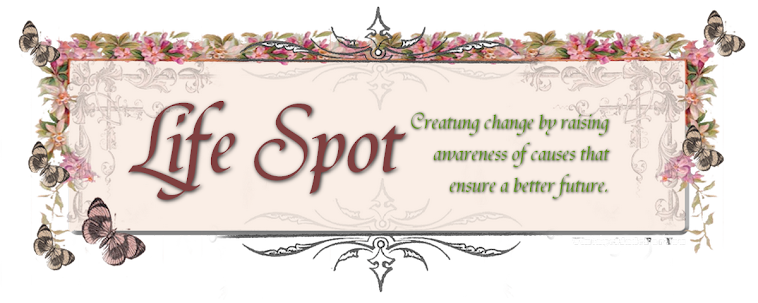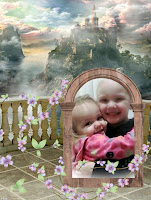Endometriosis Awareness Month is right around the corner!
A group of bloggers and myself would love for you to join in with us to help spread education and awareness regarding endometriosis! With 5.5 million women in North America alone being affected, there is a good chance that you know someone battling this often unrelenting disease.
To kick the month off, March 1st will be Yellow Shirt Day so sport your yellow loud & proud and we will kick off the month with a link of you lovely readers sporting your yellow! We would love to see social media turn yellow!
The Blogging for Endometriosis Awareness campaign runs throughout the month of March and provides an opportunity to share your journey with others and offer and receive some support and encouragement for fellow endo-sisters! Each week there is a different topic that discusses the various ways endometriosis impacts our lives. We all know that the physical aspects of the disease is just on facet of life and it impacts our lives emotionally, socially, and spiritually.
Here is a schedule of the topics:
Week of March 4th: Physical impact that endometriosis has had on your life
Week of March 11th: Mental impact that endo has had on your life.
Week of March 18th: Social impact that endo has had on your life.
Week of March 25th: Your favorite things/tips/coping tools that have helped you stay encouraged in spite of illness (suggestions: endo survival kit, advice for newly diagnosed, top 10 most annoying things you can say to someone with endo, etc)
You can post any time during the week and link up your posts here but don’t feel trapped with the list of topics. If you feel lead to share another post related to endometriosis awareness, please do so! This list of topics is just a general guideline! I hope having a list of topics provides enough inspiration to get writing but still be broad enough to allow for your creativity to let loose!
Another idea for the awareness campaign is to have friends and family members write guest posts for your blog so that we can include the stories and experiences of caregivers and loved ones! Chronic illness is obviously very difficult on the patient but also has a big impact on caregivers and loved ones and sometimes their voice gets lost. When I stop and put myself in my husband’s shoes I cannot imagine having to watch your spouse go into surgery not only once but often multiple times as well as having to watch them have pain and not being able to do anything about it. My husband is type 1 diabetic and it shatters my heart to watch when he has a bad day so it really causes me to step back and think about the hurt and the frustration he must feel about my illnesses.
Some possible topics for guest posts include:
What impact has the disease had on your life?
What is it like watching your friend/loved one suffer?
How do you offer encouragement?
If you could give advice to a friend or family member who is just
beginning the road of supporting a friend or family member with endo, what would it be?
If you have been the main caregiver for someone suffering from endo, how do you make sure to care for yourself too so you stay health?
If you could understand more about endometriosis, what would you want to know?
Plans are in the works for at least one (hopefully two!) twitter chats as well as a couple giveaways! If you are a business owner or know someone who might be interested in donating for giveaways throughout the Blogging for Endometriosis Awareness 2013 campaign, please send me an email! All giveaway sponsors will be given free ad space throughout the duration of the campaign!
You can also grab the Blogging for Endometriosis Awareness 2013 button to the right for your sidebar or posts! You can also join in the Blogging for Endometriosis Awareness 2013 Facebook event! The more we can spread the yellow love the better! Join in the discussion on twitter using hashtag #bloggingforendo2013! You can also add a Blogging for Endometriosis Awareness Twibbon to your twitter and/or facebook profile and join the Blogging for Endometriosis Awareness 2013 Facebook event! Please check back for updates!
Source: http://www.anewkindofnormal.com/chronic-illness/bloggingforendometriosis2013

A group of bloggers and myself would love for you to join in with us to help spread education and awareness regarding endometriosis! With 5.5 million women in North America alone being affected, there is a good chance that you know someone battling this often unrelenting disease.
The Blogging for Endometriosis Awareness campaign runs throughout the month of March and provides an opportunity to share your journey with others and offer and receive some support and encouragement for fellow endo-sisters! Each week there is a different topic that discusses the various ways endometriosis impacts our lives. We all know that the physical aspects of the disease is just on facet of life and it impacts our lives emotionally, socially, and spiritually.
Here is a schedule of the topics:
Week of March 4th: Physical impact that endometriosis has had on your life
Week of March 11th: Mental impact that endo has had on your life.
Week of March 18th: Social impact that endo has had on your life.
Week of March 25th: Your favorite things/tips/coping tools that have helped you stay encouraged in spite of illness (suggestions: endo survival kit, advice for newly diagnosed, top 10 most annoying things you can say to someone with endo, etc)
You can post any time during the week and link up your posts here but don’t feel trapped with the list of topics. If you feel lead to share another post related to endometriosis awareness, please do so! This list of topics is just a general guideline! I hope having a list of topics provides enough inspiration to get writing but still be broad enough to allow for your creativity to let loose!
Another idea for the awareness campaign is to have friends and family members write guest posts for your blog so that we can include the stories and experiences of caregivers and loved ones! Chronic illness is obviously very difficult on the patient but also has a big impact on caregivers and loved ones and sometimes their voice gets lost. When I stop and put myself in my husband’s shoes I cannot imagine having to watch your spouse go into surgery not only once but often multiple times as well as having to watch them have pain and not being able to do anything about it. My husband is type 1 diabetic and it shatters my heart to watch when he has a bad day so it really causes me to step back and think about the hurt and the frustration he must feel about my illnesses.
Some possible topics for guest posts include:
What impact has the disease had on your life?
What is it like watching your friend/loved one suffer?
How do you offer encouragement?
If you could give advice to a friend or family member who is just
beginning the road of supporting a friend or family member with endo, what would it be?
If you have been the main caregiver for someone suffering from endo, how do you make sure to care for yourself too so you stay health?
If you could understand more about endometriosis, what would you want to know?
Plans are in the works for at least one (hopefully two!) twitter chats as well as a couple giveaways! If you are a business owner or know someone who might be interested in donating for giveaways throughout the Blogging for Endometriosis Awareness 2013 campaign, please send me an email! All giveaway sponsors will be given free ad space throughout the duration of the campaign!
You can also grab the Blogging for Endometriosis Awareness 2013 button to the right for your sidebar or posts! You can also join in the Blogging for Endometriosis Awareness 2013 Facebook event! The more we can spread the yellow love the better! Join in the discussion on twitter using hashtag #bloggingforendo2013! You can also add a Blogging for Endometriosis Awareness Twibbon to your twitter and/or facebook profile and join the Blogging for Endometriosis Awareness 2013 Facebook event! Please check back for updates!
Source: http://www.anewkindofnormal.com/chronic-illness/bloggingforendometriosis2013











